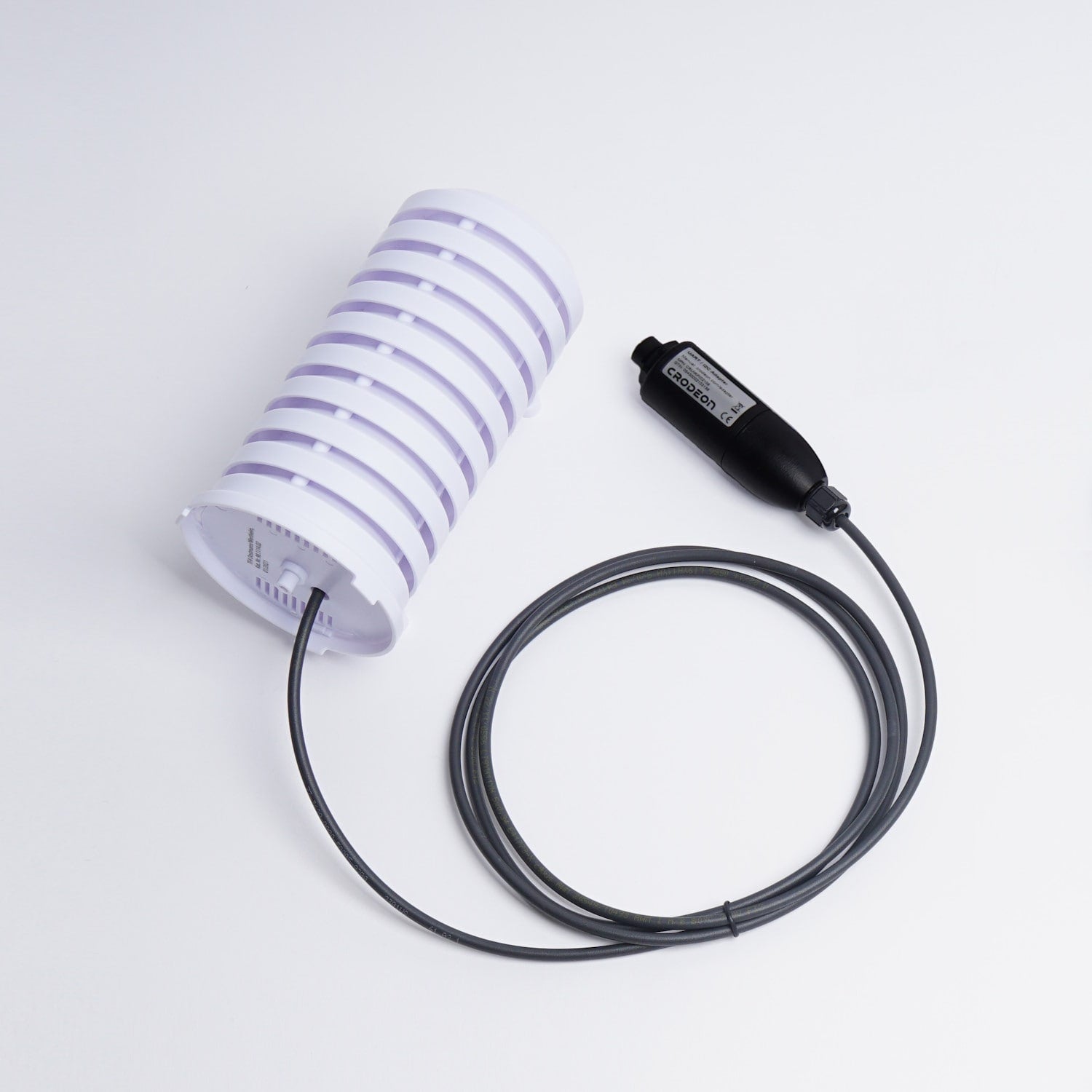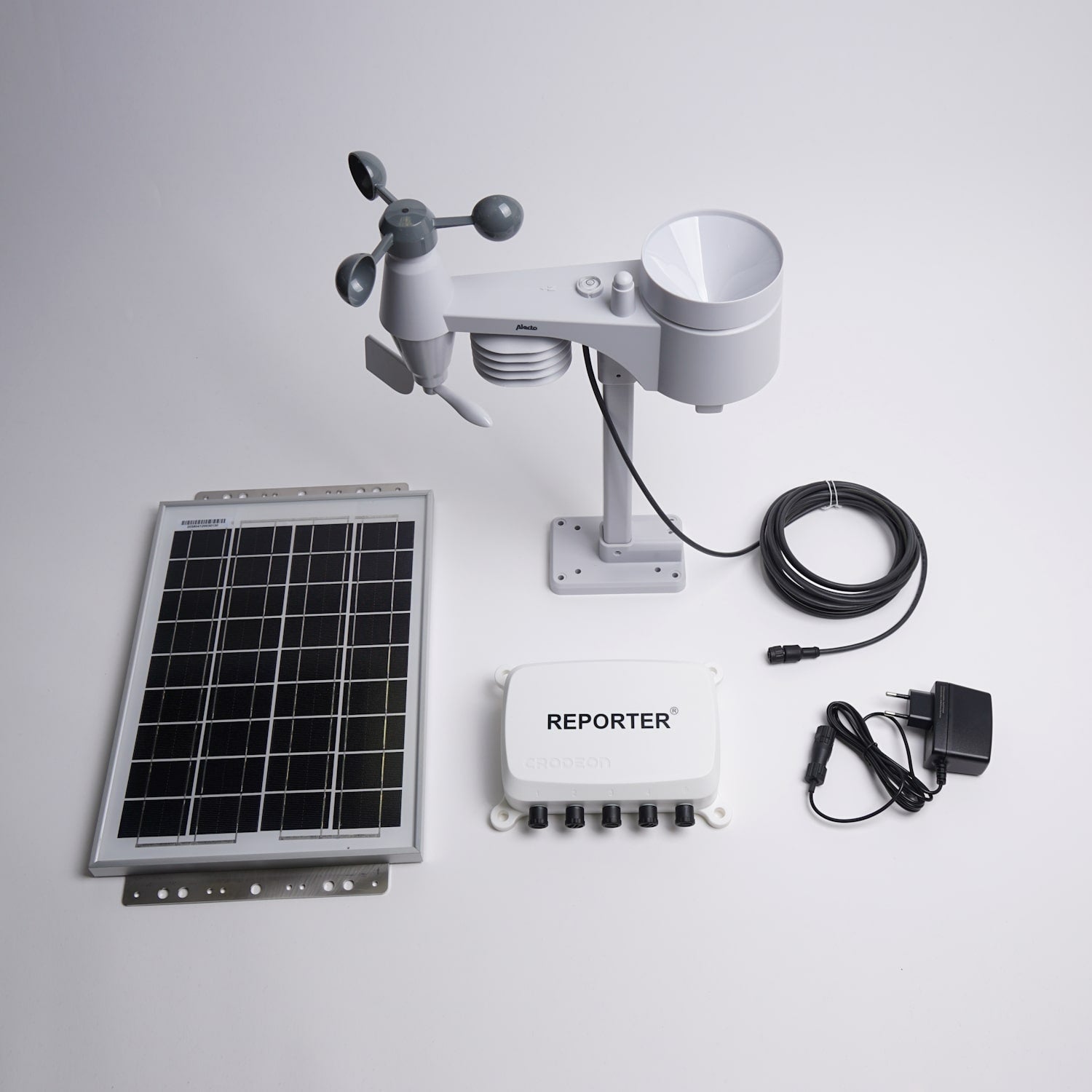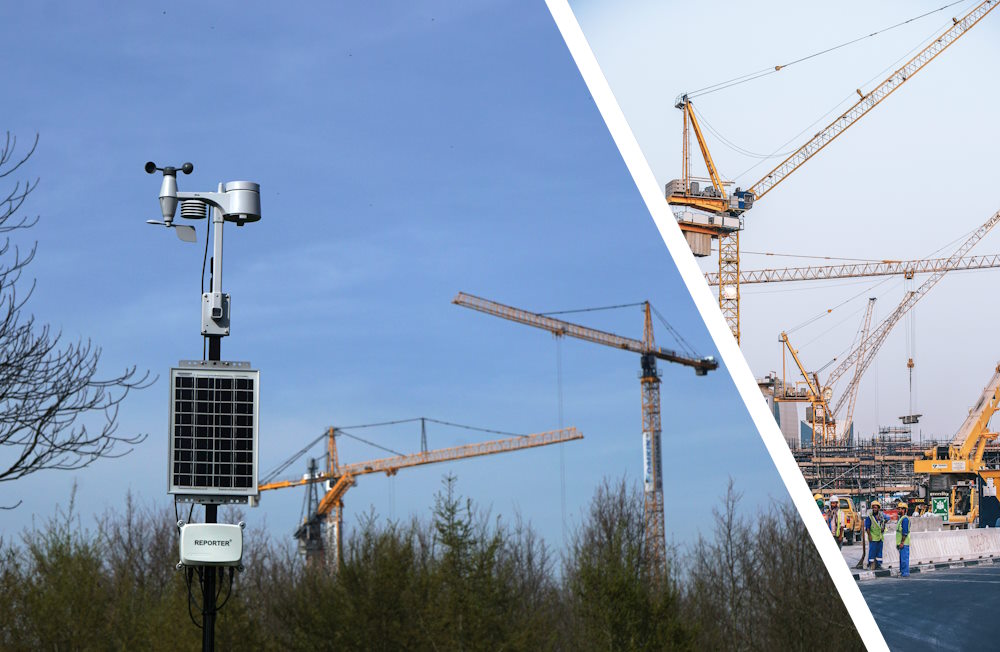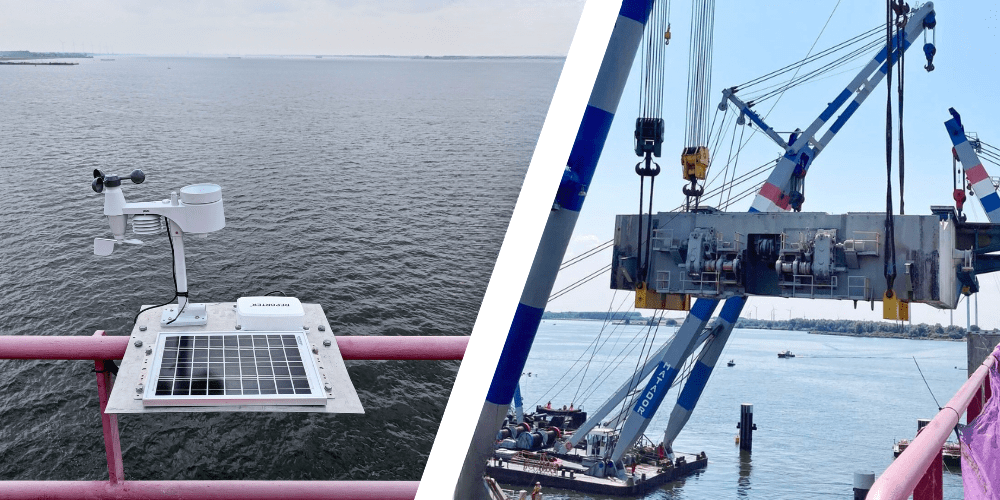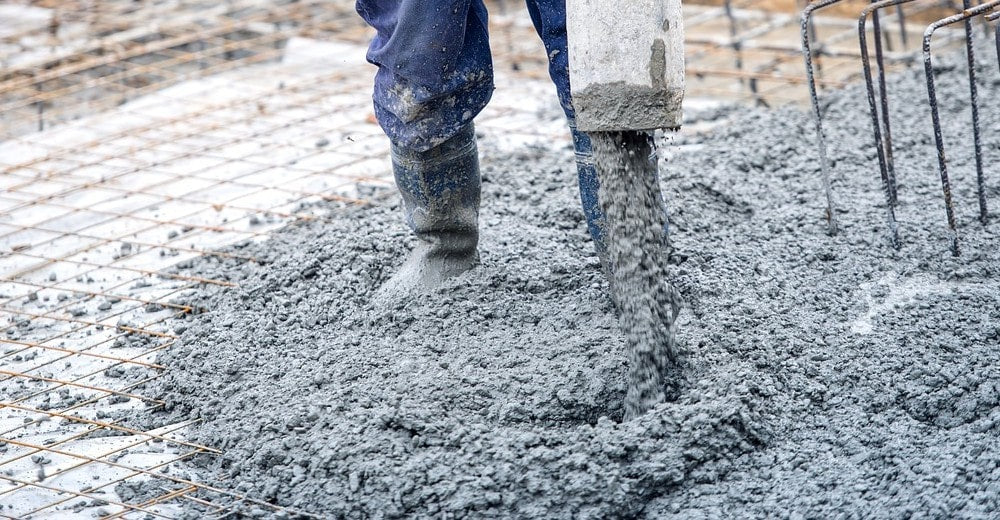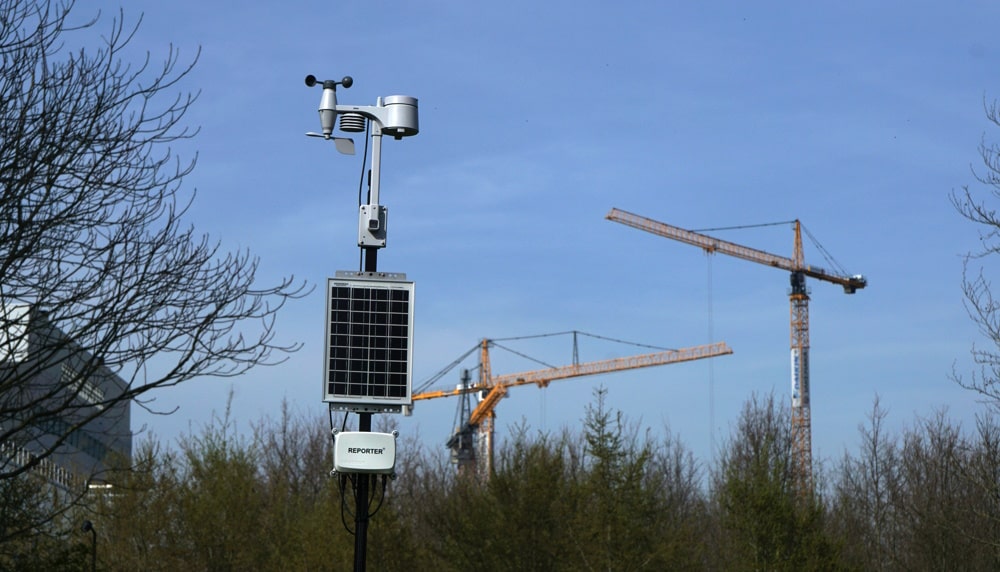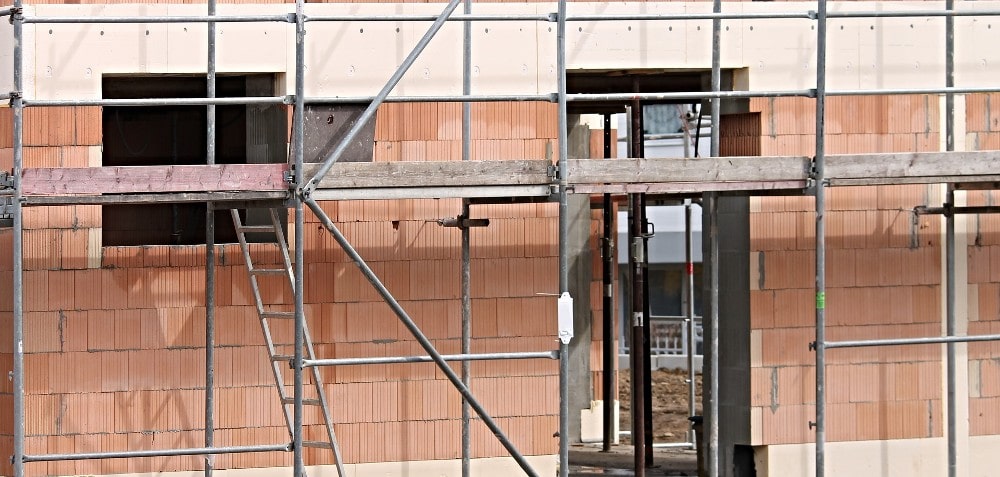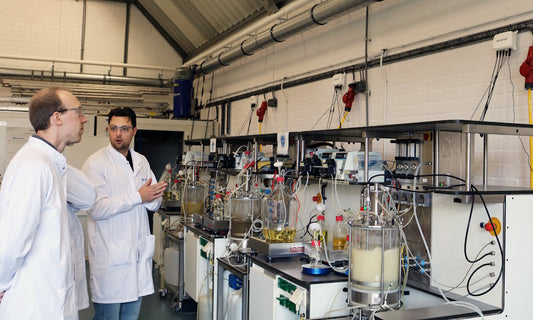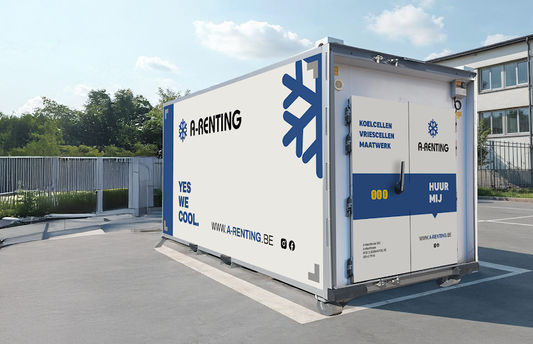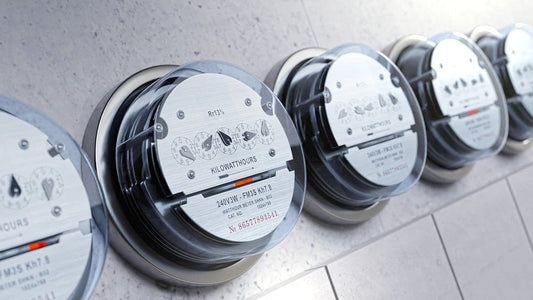Wetterwarnung für Ihre Baustelle
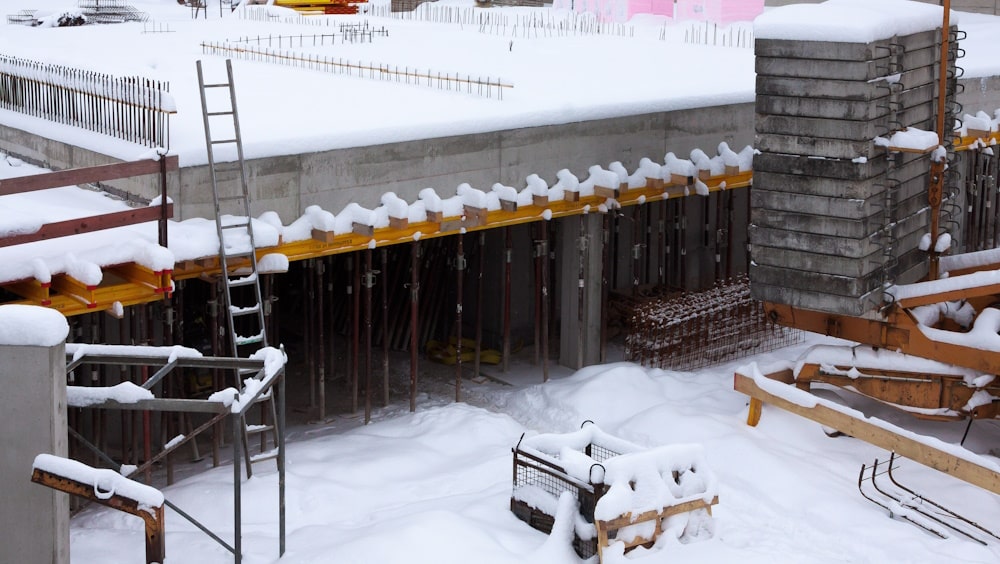
Nichts ist schlimmer, als eine Baustelle stilllegen zu müssen – vor allem, wenn sich dies mit den richtigen Maßnahmen im Voraus hätte vermeiden lassen. Glücklicherweise kann eine Wetterstation rechtzeitig vor extremen Wetterbedingungen warnen, sodass Sie sofort handeln und die Arbeit fortsetzen können!
Was ist wetterbedingte Arbeitsunterbrechung für Bauarbeiter?
Die wetterbedingte Arbeitsunterbrechung für Bauarbeiter ist eine besondere Form der vorübergehenden Arbeitslosigkeit, die durch extreme Wetterbedingungen verursacht wird. Die Arbeit muss eingestellt werden, weil sie entweder nicht sicher durchgeführt werden kann oder die geplanten Tätigkeiten unter diesen Wetterbedingungen unmöglich sind.
Dazu zählen (starker) Regen, (schwere) Frost- oder Schneefälle, (intensive) Hitze, (heftige) Stürme oder andere unvorhersehbare Wetterbedingungen. Diese werden als ungünstige Wetterverhältnisse bezeichnet.
In einigen Fällen kann der Arbeitgeber zusätzliche Maßnahmen ergreifen, um die Arbeit dennoch fortzusetzen. In anderen Fällen möchte er lediglich gut informiert sein, um seine Mitarbeiter vor möglichen Gefahren zu schützen.
Was ist Arbeitsunterbrechung durch Frost?
Arbeitsunterbrechung durch Frost ist eine spezielle Form der wetterbedingten Arbeitslosigkeit, die durch Schnee, Eis oder Minustemperaturen verursacht wird. In solchen Fällen kann die Arbeit entweder nicht sicher ausgeführt werden oder bestimmte Tätigkeiten sind nicht möglich. Gründe dafür können vereiste Wege, Schneeansammlungen oder das Fehlen geeigneter Winterkleidung sein. Von extremer Kälte spricht man, wenn die gefühlte Temperatur bei -6 °C oder darunter liegt.
Doch auch bei weniger kalten Temperaturen kann es unmöglich werden, weiterzuarbeiten. Hier geht es weniger um die Sicherheit der Mitarbeiter als vielmehr um die Art der Arbeit: Maurerarbeiten sind mit gefrorenen Ziegeln nicht möglich, Mörtel kann nicht richtig abbinden, das Abpumpen von Wasser ist sinnlos, wenn es gefroren ist. Auch hier kann eine wetterbedingte Arbeitsunterbrechung erforderlich sein.

Was ist Hitzepause?
Wetterbedingte Verzögerungen treten auch auf, wenn es zu heiß zum Arbeiten ist. Ob die Temperaturen zu hoch für sicheres Arbeiten sind, wird durch den WBGT-Index bestimmt. Für schwere und sehr schwere Arbeiten liegen die Grenzwerte bei 22 bzw. 18. Beispielsweise bedeutet WBGT 22 eine Temperatur von 29 °C bei 35 % relativer Luftfeuchtigkeit oder 25 °C bei 65 % Luftfeuchtigkeit.
Ein einfaches Thermometer reicht zur Beurteilung der Arbeitsbedingungen nicht aus, da es die relative Luftfeuchtigkeit nicht misst. Eine Wetterstation oder ein Temperatur- und Feuchtigkeitssensor kann dabei helfen. Fernüberwachungssysteme senden zudem Warnmeldungen, wenn Temperatur und Luftfeuchtigkeit zu hoch werden.
Wetterbedingte Verzögerungen vermeiden
Bei Kälte
Arbeitgeber können die Umgebungstemperatur mit Heizstrahlern erhöhen oder Arbeitsbereiche gegen Kälte, Regen, Feuchtigkeit und Wind abschirmen. Zudem sollten warme Kleidung, beheizte Pausenräume und heiße Getränke bereitgestellt werden.
Da das Wetter unvorhersehbar ist, kann es nützlich sein, ein Temperaturüberwachungssystem zu nutzen, das Wetterwarnungen sendet, wenn es unerwartet kälter wird.
Bei Hitze
Wird der WBGT-Grenzwert überschritten, müssen Arbeitgeber Maßnahmen ergreifen – z. B. Sonnenschutz (Hüte, Schirme) bereitstellen oder kostenlose Kaltgetränke anbieten. Auch ein früherer Arbeitsbeginn kann helfen, um die Arbeit vor der größten Hitze zu beenden.
Ein Arbeitgeber sollte rechtzeitig informiert sein, ob Schutzmaßnahmen erforderlich sind. So können Verzögerungen vermieden und das Personal geschützt werden.

Schon vor Arbeitsbeginn informiert sein
Arbeitgeber müssen frühzeitig auf ungünstige Wetterbedingungen reagieren. Eine eigene Wetterstation auf der Baustelle hält Sie über aktuelle Wetterverhältnisse auf dem Laufenden – sei es Hitze, Kälte, Sturm oder Regen.
Ihr persönlicher Wetterbericht auf einen Blick
Allgemeine Wetterberichte sind oft nicht genau genug, um wetterbedingte Arbeitsunterbrechungen auf Ihrer Baustelle zu bestimmen. Daher empfehlen wir eine Wetterstation auf Ihrer Baustelle. Die Crodeon professionelle Wetterstation misst Wind, Regen, Temperatur und Luftfeuchtigkeit.
Alle Wettermessungen werden live an eine leicht zugängliche Cloud-Plattform übertragen, die auf Ihrem Smartphone, Tablet oder PC verfügbar ist. Die Internetverbindung erfolgt über eine integrierte SIM-Karte. Da die Wetterstation mobile Daten nutzt, ist kein lokales WLAN-Netzwerk erforderlich.

Die Crodeon-Wetterstation kann auf verschiedene Weise mit Strom versorgt werden: über eine Standard-220V-Steckdose, ein DIN-Schienen-Modul oder ein eigenes kleines Solarpanel. Machen Sie sich keine Sorgen über den Austausch von Batterien oder andere umständliche Arbeiten.
Zusätzlich kann die Wetterstation mit Durchflussmessern, Drucksensoren, zusätzlichen Feuchtigkeitssensoren, linearen Potentiometern usw. aufgerüstet werden. Das Sensormodul (Reporter) misst außerdem Stromausfälle, wenn es an ein Stromnetz angeschlossen ist – ein sehr nützliches Feature für Baustellen. Unser gesamtes Sensor-Sortiment finden Sie in unserem Webshop.
Wetterüberwachung auf Ihrer Baustelle
Die professionelle Wetterstation von Crodeon mit dem Fernüberwachungsmodul Reporter misst ausschließlich die Wetterbedingungen an Ihrem Standort. Dank Echtzeitmessungen und der Wetterwarnfunktion (per Telefon oder E-Mail) sind Sie 24/7 über das Risiko wetterbedingter Arbeitsausfälle informiert.
Erfahren Sie mehr über unsere Wetterstation und Reporter in Smart Construction, So starten Sie, oder kontaktieren Sie uns, falls Sie Fragen haben.

